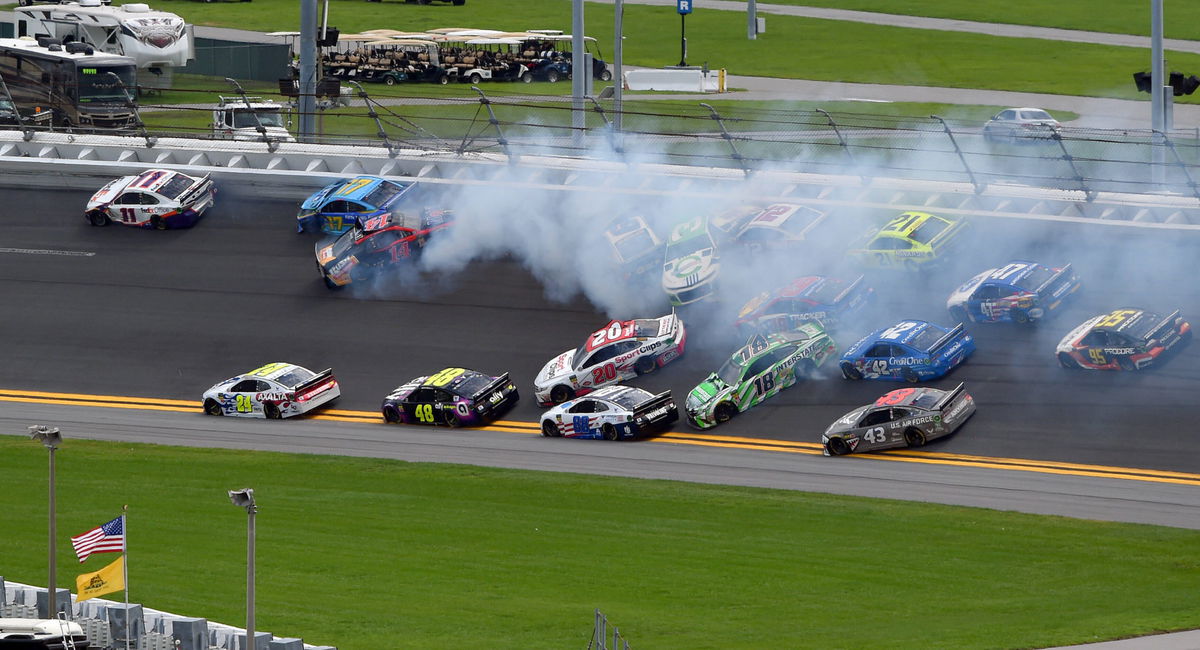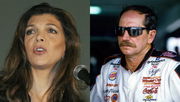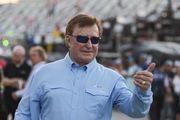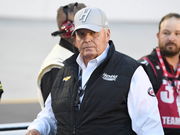
USA Today via Reuters
NASCAR, Motorsport, USA Coke Zero Sugar 400, Jul 7, 2019 Daytona Beach, FL, USA NASCAR Cup Series driver Austin Dillon 3 driver Clint Bowyer 14 driver Denny Hamlin 11 Ricky Stenhouse Jr. 17 driver Chase Elliott 9 and driver Ryan Blaney 12 wreck out of turn one during the Coke Zero Sugar 400 at Daytona International Speedway. Mandatory Credit: John David Mercer-USA TODAY Sports, 07.07.2019 14:58:35, 13014014, Clint Bowyer, Coke Zero Sugar 400, Daytona International Speedway, Chase Elliott, NASCAR, Austin Dillon, Ricky Stenhouse Jr, Ryan Blaney, Denny Hamlin PUBLICATIONxINxGERxSUIxAUTxONLY Copyright: xJohnxDavidxMercerx 13014014

USA Today via Reuters
NASCAR, Motorsport, USA Coke Zero Sugar 400, Jul 7, 2019 Daytona Beach, FL, USA NASCAR Cup Series driver Austin Dillon 3 driver Clint Bowyer 14 driver Denny Hamlin 11 Ricky Stenhouse Jr. 17 driver Chase Elliott 9 and driver Ryan Blaney 12 wreck out of turn one during the Coke Zero Sugar 400 at Daytona International Speedway. Mandatory Credit: John David Mercer-USA TODAY Sports, 07.07.2019 14:58:35, 13014014, Clint Bowyer, Coke Zero Sugar 400, Daytona International Speedway, Chase Elliott, NASCAR, Austin Dillon, Ricky Stenhouse Jr, Ryan Blaney, Denny Hamlin PUBLICATIONxINxGERxSUIxAUTxONLY Copyright: xJohnxDavidxMercerx 13014014
Little did the CBS network anchorman Bud Palmer and 50 other employees who went to Daytona to cover the events in the first-ever televised coverage of a NASCAR event, know that they would witness the worst yet miraculous crash in racing history. “Roll bars, crash helmets, seatbelts, and lady luck,” saved lives that day.
Watch What’s Trending Now!
However, when you are in a promotion that is revered for its “aggressive racing” that is pitting you against some of the fiercest drivers on the planet, things oftentimes don’t go as planned. That was what transpired on February 13, 1960, in Daytona. Mangled cars and debris were all over the place that day when 37 out of the 68 cars came crashing into each other, leading to a deadlock. The destructive pileup at the very beginning of a Modified Sportsman race is infamous to this very day as the largest crash in NASCAR history.
ADVERTISEMENT
1960’s Daytona disaster that took half the field out
While the sport has aged well with state-of-the-art safety harnesses and electronic wizardry providing real-time data, there was a time when drivers solely relied on nothing but roll bars, crash helmets, and seatbelts, confiding to prayers hoping for nothing to go wrong while they tried to outrun each other at mind-bending speeds.
Back in the day, NASCAR had a lot more cars on the field, not being confined to the limited number of cars we usually see today. The Modified Sportsman race of 1960 at Daytona was no different. It had about 73 entrants all hoping to win it big in NASCAR’s mecca, the 2.5-mile speedway – Daytona. The star-studded driver line-up was another attraction with NASCAR legends like Junior Johnson, Richard Petty, and his father Lee Petty, all eyeing a decisive win to establish their greatness in auto sports history.
But little did they know that they were in for a demolition derby. Two minutes into the race, things started falling apart on the fourth turn when a slight bump caused a massive avalanche of vehicles, sweeping across the track, and taking out more than half of the field. The early wreck was so bad that it had 24 out of the 37 cars wrecked, over 9 cars flipped, and 12 rendered totally demolished, while the other cars were moved to the pits for repair only to line up on the front stretch to get going at it again.
ADVERTISEMENT
ADVERTISEMENT
After a 40-minute delay, the track was cleared and the race restarted of the original field of cars only 44 were in running shape and some of these were still in the pits.
WATCH THIS STORY: Tony Stewart sends a chilling message of SHR’s relentlessness
ADVERTISEMENT
Months of hard work and toil were all destroyed in just minutes, prompting NASCAR to step in and limit the number of cars in the future to avoid such massive pile-ups. For some, it was a shattered dream while for others it was a proving ground, to show the world, that even such a deadly crash couldn’t hold down their spirit.
Despite cars going 150 miles an hour and coming to a crashing stop, by the grace of god nobody was fatally wounded with some racers getting bloodied and bruised. Surviving the menacing crash that took out most of the field, Junior Johnson took the win that day. While races today won’t see such pile-ups owing to the organization’s prompt safety measures, back in 2015, Austin Dillon was also sent into the fence at the same venue.
Top Stories
Teresa Earnhardt Triggers Fans as Dale Earnhardt’s Unearthed DEI Relics Go Public

Richard Childress & Johnny Morris Make Patriotic Power Moves Days After Causing NASCAR’s Collapse in Courtroom

What Is NASCAR’s 5-Strike Rule That Could Change Its Future? Check All Details Here

Rick Hendrick Strikes Fear in NASCAR Fans With Chevy’s New “Illegal” Car

While NASCAR Clings to Playoffs, Rival Motorsports Series Makes Bold Return to Traditional Points System

ADVERTISEMENT
Beyond the fencing, debris flies into the stands as the 2015 Coke Zero 400 turns treacherous
The 2015 rendition of Coke Zero 400 is a race that no NASCAR fan can forget. Daytona yet again witnessed a vicious crash when Austin Dillon was sent into the fencing after Denny Hamlin and Clint Bowyer got into each other, spinning Dillon into a violent crash. This was one of the nastiest NASCAR wrecks in the history of the sport where even the fans got hurt by flying debris.
ADVERTISEMENT
While Dale Earnhardt Jr crossed the finish line first, Dillon went airborne with the #3 RCR Chevy into the catch fence. After the car came down on its hood, it was hit again by Brad Keselowski. Thankfully, despite the deadly crash, Dillon emerged from the car unhurt and waved to the crowd as he was being led away.
READ MORE:
ADVERTISEMENT
ADVERTISEMENT
ADVERTISEMENT
ADVERTISEMENT

